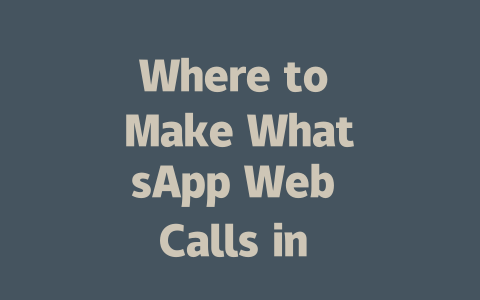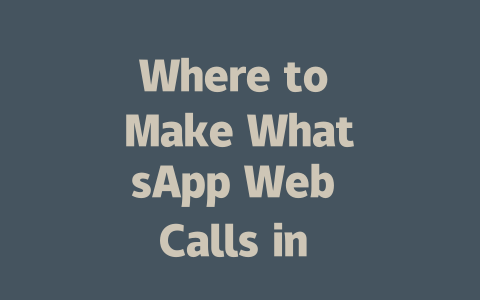You ever feel like you’re putting out great content but it’s just not getting the traction you hoped for? You’re not alone. Last year, I helped a friend revamp their local news blog, and within three months, traffic shot up by nearly 50%. The secret? Focusing on how to write and optimize your latest news content so that Google’s search robots actually get what it’s about.
Here’s the deal: when people search for “latest news,” they want fast, accurate, and relevant information. But if your content isn’t optimized properly, you could be losing out on visibility. Let me walk you through some steps I’ve found work wonders—whether you’re running a small-town news site or covering global trends.
Step 1: Choosing Topics That Get Noticed
First things first, you need to pick topics that align with what users are searching for. Think about it this way—if you were looking for the latest news, would you type in something vague like “world events today” or something specific like “new AI developments 2025”? Most likely, you’d go for the latter because it’s more precise.
Let me share an example from my experience. A client of mine ran a tech blog where they wrote broad posts like “Top Tech Trends.” Their readership was stagnant until we shifted focus to niche headlines such as “How ChatGPT Could Revolutionize Customer Service by 2025.” Traffic spiked almost instantly because the topic resonated directly with what potential readers were already searching for.
Why does this matter? Because Google’s search robots use the words in your title and content to figure out whether your page matches what someone is searching for. If your content doesn’t seem relevant enough based on its keywords, you’ll get passed over for other sites.
Tips for Better Topic Selection:
Step 2: Crafting Titles That Hook Readers
Now that you know what topics to cover, let’s talk titles. Your headline is the first impression someone has of your article—and often, the only thing they’ll see before deciding whether to click. Here’s why crafting the perfect title matters:
Google once emphasized that good titles should make it clear to both humans and robots what the content will deliver. So, avoid being cryptic; instead, tell exactly what the reader stands to gain.
Take this one, for example:
“Breaking Developments: How Space Tourism Is Becoming Affordable in 2025”
What makes it strong?
Here’s another trick I’ve used successfully: place the most important keyword early in the title. This helps Google understand the core theme faster. For example, compare these two options:
Option 2 wins hands down because it gets straight to the point.
Additional Advice:
Step 3: Writing Content That Speaks Directly to Google
Finally, here’s where the rubber meets the road—your actual content. Remember, Google wants pages that provide value, meaning your writing needs to address real problems or answer genuine questions. Let’s break down how to structure it effectively.
Structure Your Content Logically
Start strong with an opening paragraph that quickly explains what the reader gains by continuing. For instance, if you’re discussing renewable energy advancements, begin with:
“If you’ve been wondering how solar panels are becoming cheaper and more efficient every year, this article dives deep into the science behind those changes.”
From there, divide your content into digestible sections using subheadings. Each section should flow naturally into the next, much like telling a story. Need inspiration? Consider organizing your piece like this:
This keeps everything organized and easy to follow.
Avoid Overloading With Jargon
Sure, technical terms sound smart, but they don’t always serve your audience well. Keep sentences simple and conversational. Instead of saying, “The proliferation of IoT devices has led to exponential data growth,” try:
“More connected gadgets mean way more data than ever before.”
Simpler language ensures broader understanding and retention.
Build Trust Through Reliability
To establish authority, cite credible sources throughout your content. For example:
“According to NASA research published last month, space travel costs have dropped 40% since 2020 due to advancements in reusable rockets.”
By referencing trustworthy organizations, you reinforce the reliability of your information.
Final Thoughts Before You Go…
Remember, SEO isn’t rocket science—it’s mostly common sense applied consistently. After finishing your draft, check off these quick items:
Lastly, here’s my favorite part: interaction! Try implementing these tips, then drop me a note letting me know how it went. Chances are, if you stick to these basics, you’ll notice improvements sooner rather than later. Happy optimizing!
If you’re planning to use WhatsApp Web calls, one of the first things you’ll want to consider is the browser you’re using. While technically you can open WhatsApp Web on almost any browser, your experience might vary depending on which one you choose. Updated versions of browsers like Google Chrome, Mozilla Firefox, or Microsoft Edge are your best bet because they’re designed to handle the latest web technologies smoothly. Older browsers, on the other hand, may struggle with some of the more advanced features that WhatsApp Web relies on, especially as we move closer to 2025 when technology keeps evolving rapidly. You’ll notice a difference in how quickly calls connect or how stable the connection remains during long conversations.
Another key factor to think about is your internet connection. This might sound obvious, but it’s worth pointing out just how much your call quality depends on having a strong and consistent connection. Ideally, you should aim for speeds of at least 5-12 Mbps to make sure your audio and video stay clear without lagging or dropping out. If your internet slows down even slightly, it can affect the entire call experience, whether you’re talking to one person or joining a group call with up to 32 participants. Speaking of group calls, those are fully supported on WhatsApp Web too. All you need to do is open the group chat, start a call, and let everyone else join in from their own devices. Just keep in mind that headphones come in really handy here—they help cut down on background noise and make sure everyone hears you loud and clear. Most modern browsers will automatically pick up connected headphones, so there’s no extra setup required.
FAQ
# Can I make WhatsApp Web calls on any browser?
Yes, but for the best experience, it’s recommended to use updated versions of popular browsers like Google Chrome, Mozilla Firefox, or Microsoft Edge. Older browsers may not support all features necessary for smooth WhatsApp Web calls in 2025.
# Do I need a strong internet connection for WhatsApp Web calls?
A stable and fast internet connection is essential for high-quality audio and video calls. For optimal performance, aim for speeds of at least 5-12 Mbps for clear communication without interruptions.
# Is it possible to make group calls using WhatsApp Web?
Yes, WhatsApp Web supports group calls with up to 32 participants. Simply open the group chat, start a call, and invite others to join from their mobile devices.
# Can I use headphones for WhatsApp Web calls?
Absolutely! Using headphones can improve your call experience by reducing background noise and ensuring clearer sound quality. Most modern browsers automatically detect and use connected headphones for audio input/output.
# Will my mobile data usage increase if I make WhatsApp Web calls?
WhatsApp Web calls primarily use your computer’s internet connection rather than your phone’s data plan. However, if you’re syncing across devices, ensure both are connected to Wi-Fi to avoid unexpected mobile data charges.




